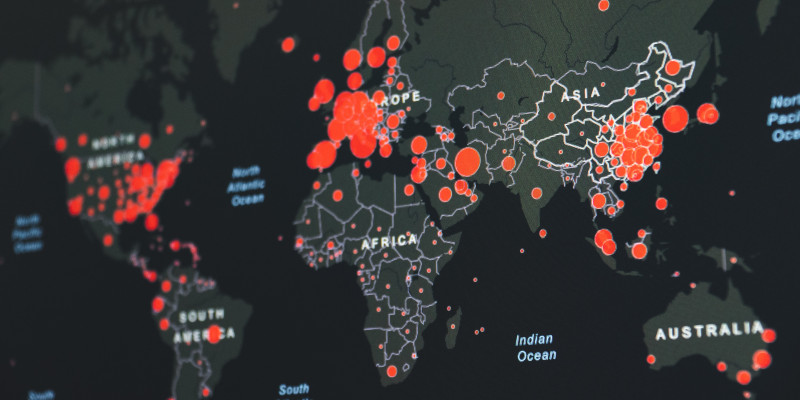Even as many celebrate economic progress in Africa, there are a significant number of dissenting observers who remain circumspect about the reality of the continent’s development story. This book asks the critical question of whether economic growth ...
Even as many celebrate economic progress in Africa, there are a significant number of dissenting observers who remain circumspect about the reality of the continent’s development story. This book asks the critical question of whether economic growth alone can provide the development impetus that Africa requires and whether the “quality of growth” is sufficient, through 15 incisive chapters written by various academics under the Initiative for Policy Dialogue at Columbia University (IPD).
Founded in July 2000 by Nobel Laureate Joseph Stiglitz, the IPD stimulates a radical policy dialogue on major issues in international development by leveraging a global network of economists, political scientists, and policy centres in the global South and North in a bid to bring the issues of developing countries to academics and the fruits of academic research to policymakers.
It promotes a more inclusive and pluralist discourse on the major global debates on economic and political development, in which countries often face a narrow set of policy prescriptions that may not fully suit their domestic preferences and capabilities.
In short, it helps countries analyse the complex policy trade-offs they face and provides them with access to a broader range of economic solutions that promote democratic, equitable and sustainable development.
The Quality of Growth in Africa has sections dealing with GDP, Equity and Employment; Structural Transformation for Quality Growth; Economic Transformation; Environment; and Urbanisation.
The book opens with a critical analysis of GDP. Authored by Lorenzo Fioramonti, it argues the need for a new approach to the measurement of prosperity that is less reliant on simple GDP figures. He argues that GDP estimates do not fully take into account informal activities, nor the depletion of natural resources and the impact of pollution – all factors which are prevalent in Africa’s growth story.
Fioramonti calls for a system of measuring the quality of growth in Africa that encompasses social wellbeing, the real economy and natural welfare.
But that, in turn, calls for a radical improvement and accuracy in the way that Africa collects and disseminates the relevant data. This is the focus of the second chapter, a study by Andy McKay that takes up the idea of a quality of growth index for developing countries. Such an index would take account of six aspects – four relating to growth fundamentals (strength, volatility, sectoral composition and demand composition) and two relating to social outcomes (education and health).
Lessons from Asia
But are the fundamental lessons of growth the same for all developing economies? In the fifth chapter, Jomo Kwame Sundaram focuses on the lessons that can be learned from Asian countries that recorded a surge of economic growth in the early- to mid- 1990s. Sundaram makes clear that economic growth was not as homogenous in East Asia as has been commonly thought. That has mistakenly encouraged the perception that East Asia was “much more economically coherent than it actually was”. Perhaps the most important lesson that can be drawn from East Asia is that “context is all important” – for example, in the appropriate investment policies to attract FDI – a crucial lesson in Africa, where wildly diverging economies are too often bracketed together and given the same policy prescriptions.
That call for a greater focus on the complexity of individual economies is carried into Part III with a chapter from Christopher Cramer and John Sender, who argue that “categorical distinctions among manufacturing, agriculture and services have broken down”, but that policymakers are often trapped in an outdated view of a “linear transition away from primary commodity production in rural areas to urban industrial factories”. Indeed, in a vibrant chapter by Antonio Andreoni, it is argued that integration into global value chains, often seen as a silver bullet for the continent’s industrialisation potential, has not increased domestic value addition. It is clear that joined-up thinking across a diverse range of sectors is required.
With industrialisation only one part of Africa’s growth story, Simon Roberts looks at food production in Southern Africa through an examination of sugar and fertiliser markets, arguing that it is essential to build regional industrial policy institutions.
The perils of growth
Yet the future of food production on the continent is critically endangered by climate change, the crucial focus of Part IV of this book. Ben Orlove argues that “climate change threatens to weaken the natural environment, which is crucial for sustained economic growth and human well-being.” Orlove laments a lack of sufficient government support and investment, concluding that growth that recognises the necessity of climate action is high quality growth. In the chapter following Orlove’s contribution, Go Shimada discusses the possibility of a green industrial policy to respond to this crisis. He notes the essential need for the international community to support Africa’s attempt to tackle adaptation and mitigation, a key topic left unresolved by the recent UN Climate Action Summit.
The final three chapters that form Part V of this impressive book deal with the positive and negative impacts of how urbanisation drives inexorably onwards and will shape the future of growth on the continent and its challenges.
Takyiwaa Manuh and Edlam Abera Yameru write: “Urbanisation in Africa is an inevitable and irreversible process, and the future of the continent will largely be determined in its growing cities… the swift urbanisation that the continent is experiencing combined with the demographic dynamic of an immensely youthful profile, present the continent not only with a challenge but also an unprecedented opportunity to usher in a period of rapid, inclusive and sustained growth.”
That message optimistically closes a provocative and eye-opening series of essays which help envision a future that goes beyond increasing GDP to ensuring that growth translates into advancements in wellbeing.
Original Source: https://africanbusinessmagazine.com/book-of-the-month/excellence-or-illusion/




